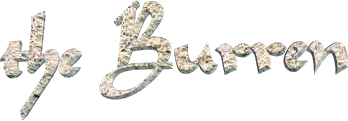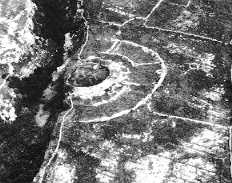
| Introduction | Flora of the Burren |

|
| Cahercommaun is the well known trivallate cashel perched on the
edge of a ravine. It is the only ringfort in the Burren to have been scientifically
excavated and is now a National Monument.
Cahercommaun was porbably occupied by an extended family group. The Harvard Team estimated its population as 'at most 40 or 50 inhabitants'. Irish society at c. 800 A.D. are described as 'tribal, rural, heirarchal and familial'. The latter word in its older sense to indicate a society in which the family rather than the individual was the primary social unit. Though other family groups are also described in the early law tracts, the kin group referred to is the derbhfine or 'true group' whose members were all descendants through the male line of the same great grandfather. Apart from posessing its own land each kin-group also bore responsibility for the actions of and injuries to its members. As well as chosing its own family head whose role it was to speak for the kin on public occasions (Kelly 1988) The economy of these family groups was based largely on Agriculture and most ringforts were probably the centres of 100+ hectare farms. Often well preserved but undated. Traces of old field walls survive around many of the ringforts. Tillage was always practiced on the patches of deep soil in the Burren. The main attraction of these mountain farmers must have existed by them having large tracts of grassland. A spindle-whorl was found in the excavation. This is used in spinning which means that they had wool production. Animal bones found on the site: cattle 97% of total; pig 1%; sheep and goat 1%; the remaining 1% made up of horse and red deer. The greatest number of ringforts in any one location in Ireland are in the Burren today. [back] |
 |
© 2005 Villa Maria